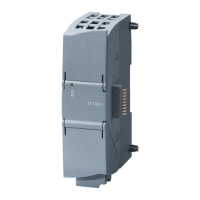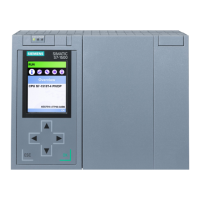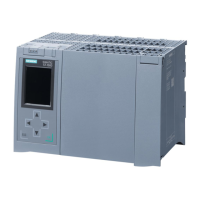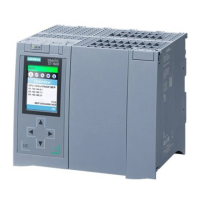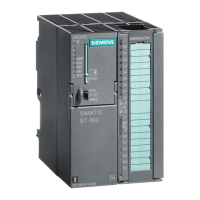Programming concepts
6.2 Structuring your user program
S7-1200 Programmable controller
170 System Manual, 03/2014, A5E02486680-AG
Specify the operator
stations
Based on the requirements of the functional specifications, create the following drawings of the
operator stations:
• Overview drawing that shows the location of each operator station in relation to the process
or machine.
• Mechanical layout drawing of the devices for the operator station, such as display, switches,
and lights.
• Electrical drawings with the associated I/O of the PLC and signal modules.
Create the
configuration drawings
Based on the requirements of the functional specification, create configuration drawings of the
control equipment:
• Overview drawing that shows the location of each PLC in relation to the process or machine.
• Mechanical layout drawing of each PLC and any I/O modules, including any cabinets and
other equipment.
• Electrical drawings for each PLC and any I/O modules, including the device model numbers,
communications addresses, and I/O addresses.
Create a list of
Create a list of symbolic names for the absolute addresses. Include not only the physical I/O
signals, but also the other elements (such as tag names) to be used in your program.
Structuring your user program
When you create a user program for the automation tasks, you insert the instructions for the
program into code blocks:
● An organization block (OB) responds to a specific event in the CPU and can interrupt the
execution of the user program. The default for the cyclic execution of the user program
(OB 1) provides the base structure for your user program. If you include other OBs in your
program, these OBs interrupt the execution of OB 1. The other OBs perform specific
functions, such as for startup tasks, for handling interrupts and errors, or for executing
specific program code at specific time intervals.
● A function block (FB) is a subroutine that is executed when called from another code
block (OB, FB, or FC). The calling block passes parameters to the FB and also identifies
a specific data block (DB) that stores the data for the specific call or instance of that FB.
Changing the instance DB allows a generic FB to control the operation of a set of
devices. For example, one FB can control several pumps or valves, with different
instance DBs containing the specific operational parameters for each pump or valve.
● A function (FC) is a subroutine that is executed when called from another code block (OB,
FB, or FC). The FC does not have an associated instance DB. The calling block passes
parameters to the FC. The output values from the FC must be written to a memory
address or to a global DB.

